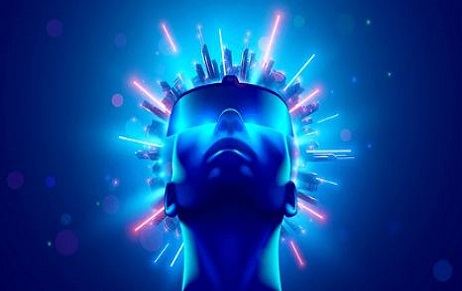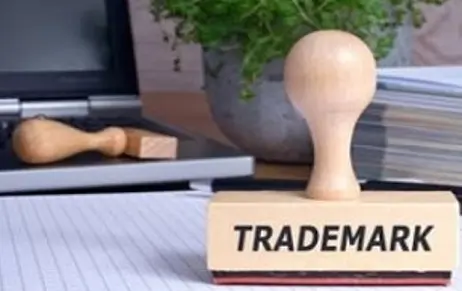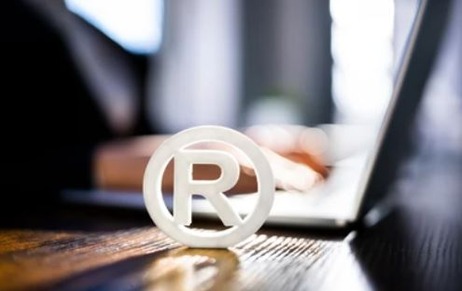TRADEMARK A trademark is something that we encounter on a regular basis. It is the…
Understanding Unconventional Trademarks (Part I)
Traditionally speaking we have for the longest time associated trademarks with words, logos, pictures, or combination thereof. But in recent times, this norm has been challenged by the introduction and growth of acceptance of unconventional trademarks.
The unconventional trademark is a broad and inclusive term for all those marks that don’t fall in the conventional set of marks. It includes marks that may be visible such as colors, shape( 3-D), moving images, holograms, and even positions, also included are non-visible marks such as smell, sound, taste, and feel marks.
These marks are sought to be protected as traditional marks for the same reason that is to avoid weakening of the distinctive value of these marks. Not providing protection to such marks would not be short of complacency to commercial invasion by others who may seek to benefit from the goodwill and reputation attached to such non-traditional marks.
It is important to recognize these unconventional trademarks as these are the next step in innovation and creativity in business. The creators and users of such marks are developing these marks to set themselves apart from the common practices in the industry, and such an endeavor needs to be recognized and protected by the Trademark regimes.
In India, for a mark to be registrable it needs to be first, distinctive i.e., have the capacity to distinguish the goods and services of one person from those of the rivals/competitors, and secondly, capable of being graphically represented.[1] A mark is graphically represented when it can be made in paper form, and such representation can stand in place of the mark itself, without needing supporting samples to determine what the mark is.[2] It is this requisite of graphical representation that poses a severe hurdle to the registration of some unconventional marks.
“Unconventional marks” are a fascinating and ever-expanding area to explore, which shall be done in this article and Part II of this article. In Part I, we shall discuss shape (3D), olfactory, and little-known “architectural” trademarks.
Shape Marks: These marks easily pass the test of graphical representation but may be denied registration for lack of distinctiveness. What needs to be proved by the Applicant is that the shape has become distinctive of the goods and does not represent a functional feature of the product. This form of the mark has been accepted by the Indian trademark regime as the same is mentioned in the definition of the mark in the Trademarks Act, 1999, further the Trademark Rules, 2017 also provide for the stipulations for registration of such marks.
The ease with which customers can recognize the product just by the shape to the exclusion of other identical goods is the parameter for granting such registration. The Delhi High Court, in the case of Apollo Tyres Ltd. vs. Pioneer Trading Corporation and Ors[3]. has aptly explained the significance of shape marks: “the shape of the goods is statutorily recognized as being a constituent element of a trademark. The shape of goods could, in a given case, have trademark significance i.e. the particular shape of the goods could become a source identifier of the goods. Copying of the unique shape of the goods could lead to confusion amongst the consumers with regard to the source from which they originate.”
In GorbatschowWodka WG v. John Distillers Ltd[4], the High Court of Bombay protected the shape of the Vodka bottle of the Plaintiff on account of the distinctiveness of the shape owing to its unique shape not being a functional feature and long use. In line with this courts protected the shape of KINLEY water bottles[5] and interestingly the Zippo lighters.[6]
Another interesting type of mark is the olfactory/ scent mark:
The Act, as well the Manual on Trademarks is utterly silent regarding this mark. It is extremely difficult to register an olfactory mark because it cannot be graphically represented. Writing down the formula for a smell is problematic as it would denote the substance rather than the smell of that substance. Additionally, if the application is made with a sample of such smell provided as evidence, such in question may degenerate over a period of time as the chemical composition may deteriorate.
Any description of such scent must be so precise that it would denote that particular smell and nothing else. A verbal description of smell can be subjective (depending on the sensory perception) and cannot really provide a full-proof method of identifying and distinguishing one smell or scent from another.
But this is also not possible without room for error. Lastly, the smell should not be a product or result of the nature of the goods themselves. Chanel tried to register its fragrance Chanel No.5 in the UK but failed as the scent was the essence of the product and its function.
Yet there are instances of registration of such olfactory marks.
In the US, the hurdle of graphical representation is relaxed, for a smell mark to be registered what needs to be proved, rather the test is of distinctiveness and that the scent is not an inherent attribute of the product like cologne, perfumes, etc but a unique to the product and recognizable by the consumer. The mark was for a “high impact, fresh, floral fragrance reminiscent of Plumeria blossoms” used in connection with sewing thread and embroidery yarn was registered in US.[7] This is followed by a number of smell mark registration such as “flowery musk scent” for Verizon store, Bubblegum scent for sandals by Grendene, and most recently to Hasbro’s Play-Doh for its distinctive “sweet, slightly musky, vanilla fragrance, with slight overtones of cherry, combined with a smell of a salted, wheat-based dough”.
Similar to India, UK, EU require a graphical representation of marks, on this, in the UK, Venoot Schap onder Firma Senta Aromatic marketing’s Application[8], the smell mark “ the smell of fresh-cut grass” for tennis balls was granted wherein the Second Board of appeal observed that description of olfactory the mark for tennis balls is appropriate and enough to comply with the requirement of graphical representation. The EU is following a similar method but the description test is highly subjective and the question of exact precision may arise and have completely rejected samples and chemical formula as a graphical representation.
In India olfactory marks and not expressly prohibited but it follows the same position as the EU for the smell to be registered as long as it can be a graphical representation and it can be distinctive of the good it will be allowed for registration. but as can be seen from the lack of smell marks granted in India, this non-traditional trademark is still at its infancy stage.
Aside from protection provided under the copyright and design, another area to be explored for protection of such architectural works is that of the trademark. In recent times, globally well-known buildings such as Empire State Building and Sydney Opera House Building and within India the Taj Mahal Palace hotel (dome and grand exterior)and 28-storey Phiroze Jeejeebhoy Towers – Bombay Stock Exchange Buildings in Mumbai form a very small group of trademarked buildings in the world. Such an architectural trademark doesn’t only restrict others from copying the famous structures, but also restricts commercial exploitation of the designs and look of these structures, such as on memorabilia, without their prior approval.
Such Trademark protection of buildings may not always be possible but a three-dimensional configuration of a building may be registered as a trademark if it is used in such a way that it could be perceived as more than a building but an indicator of the services or good, and in their right have become notable landmarks. Another aspect is trademarking part of the building that is an indicator of such landmarks, many owners of well-known buildings such as the Transamerica Building in San Francisco, the Wrigley Building in Chicago, and the Citicorp Center and Guggenheim Museum in New York, The Gherkin in London, trying to capitalize on such protection have all obtained trademarks for a certain part of these buildings that may serve as a mark for the building, unique in the sense that it may be used as an indicator for that building, claiming that the images of the marks serve as indicators of the source of services and goods bearing the images.
The structures are being registered as they capable of graphical representation, and the building is capable of indicating the source of the goods and services.
To elaborate, the Transamerica Building—with its famous triangular tower silhouette—may serve as the source indicator of the financial services provided by Transamerica, similarly for the Stock Exchange Building in Bombay.
Apple provides an example of how to protect architectural design with trademarks in a novel way. Their stores cannot be structurally the same everywhere, and most Apple stores are located in malls, so they can’t be protected as individual buildings. However, their layouts, with their open spaces and symmetrically arranged displays, received trademark protection from the U.S. Patent & Trademark Office on January 24, 2013, the trademark’s language covers the glass entrance, lighting, table placement, and the well known “Genius Bar” design, but it doesn’t cover individual fixtures. Thus, the electronic gadget manufacturer secured a trademark for the “architectural design of Apple stores”.The trademark protection of “architectural design of Apple stores” helps Apple to legally act against duplication of the “look and feel” of its stores by any of its competitors. Thus, what is protected is the signature architectural style that is indicative of the source of goods and services in the perception of the consumers.
Thus, unconventional trademarks have been gaining momentum internationally, and India has also been part of this growth, though there is still want of certain provisions which may once and for all settle doubts when it comes to non-visual marks such as scent.
Author: Sugandh Shahi, a 5th-year student of BA LLB (Hons.), Amity Law School (Delhi), intern at IIPRD. In case of any queries please contact/write back to us at [email protected].
References:
[1]Section 2(1)(zb), Trademarks Act, 1999, Laxmikant V. Patel v. Chetanbhat Shah (AIR 2002 SC 275).
[2] Dr. V.K. Ahuja, “Law Relating to Intellectual Property Rights” 3rd Edition, pg. 264.
[3]2017(72) PTC 253 (Del)
[4]5 2011 (3) AIR (BOM) 762
[5]The Coca Cola Company and Or . v. Narsing Rao and Ors.
[6]Zippo Manufacturing Company v. Anil Moolchandani and Ors.
[7]In re Celia, dba Clarke’s Osewez, 17 USPQ2d 1238 (TTAB 1990)
[8][1999] E.T.M.R. 429



